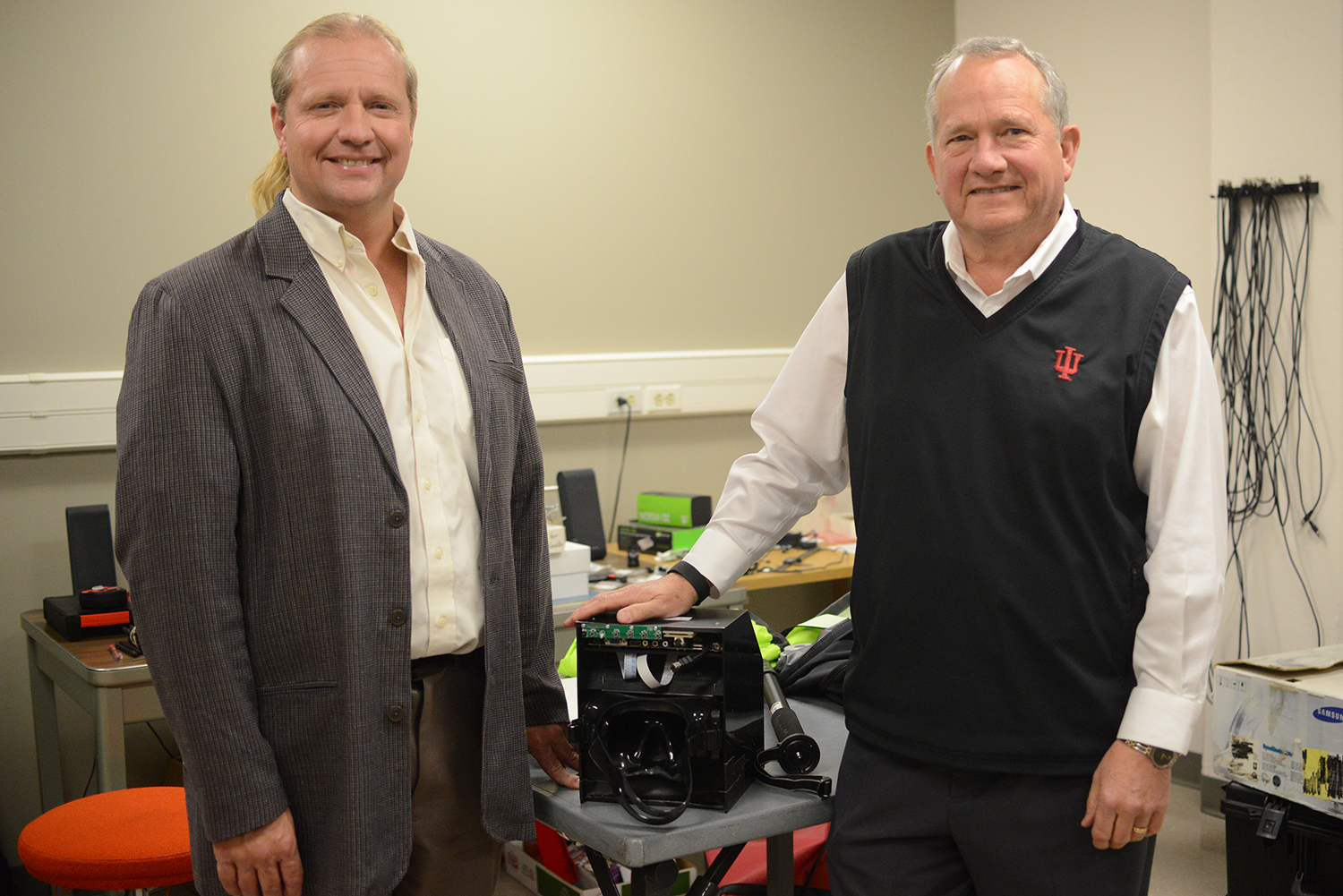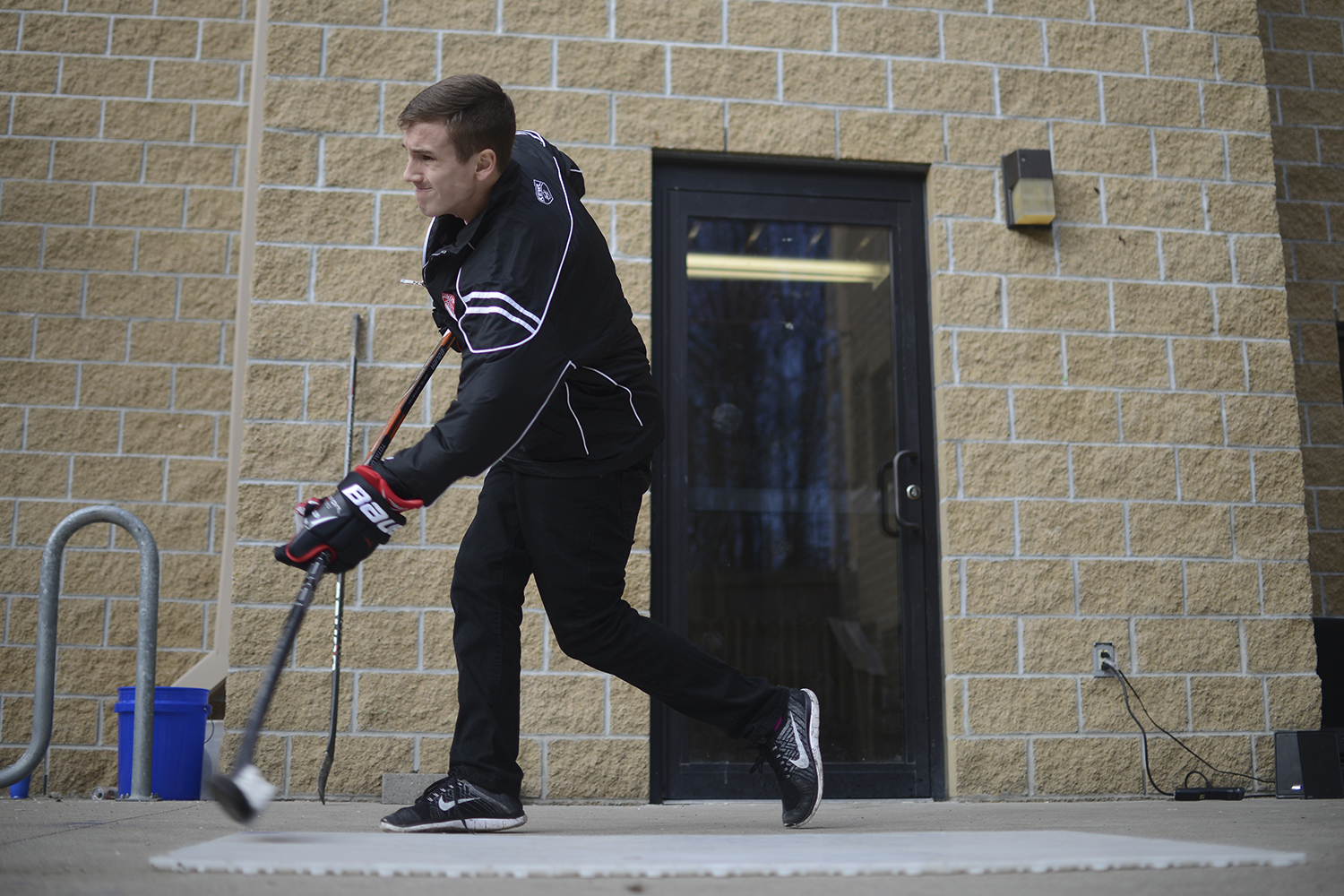Austin Reid isn’t sure exactly how many concussions he’s had.
Since he began playing competitive hockey at age 4, the IU sophomore and defenseman has taken countless hits on the ice. His last injury came in September, during a preseason practice game when a shoulder to the head sent his head into the glass.
“Immediately after (the hit), I knew I had a little bit of a concussion because I have had a few before,” Reid said. “But I thought I was going to be fine, so I continued practicing for the next week.”
However, he wasn’t able to brush off the injury like he had with others in the past. When he noticed he was having trouble focusing and studying, he decided to take a trip to the health center.
That visit marked the start of Reid’s long road to recovery: a journey that has been ridden with endless doctor’s appointments, medical prescriptions and vision therapy visits.
It also marked the end of his competitive hockey career.

According to a 2010 NCAA survey, 13.3% of male NCAA athletes and 9.9% of female NCAA athletes have experienced a concussion, respectively. Male ice hockey athletes report the third highest amount of concussions behind wrestling and football, while female ice hockey athletes report more concussions than any other sport.
Researchers are taking note of this epidemic. For the past five years, Indiana University optometry professors Dr. Steven Hitzeman and Dr. Nicholas Port have been teaming up to tackle concussion research through the study of eye movements.
Backed by the funding of a grant, the pair of researchers built a portable device that allows them to evaluate an athlete’s eye movements on the sideline.
“There wasn’t anything on the market for what we were doing, so we decided to build our own,” said Dr. Port. “Our goal was to build something that was portable, would work in direct sunlight, and would allow us to perform sideline-based evaluations.”
The evaluations, however, are very different from the cognitive tests that have become a standard for athletes in high-impact sports.
“The classic neuro-cognitive testing is an essential part of managing a concussion for student athletes,” said Dr. Port. “It’s a series of cognitive, brain tests that you take a day or two after the concussion, and this gives the health care provider a sense of where your cognitive skills are in comparison to where you were when you took the test before the season. It’s essential that the athlete’s cognitive function is back to normal before they can return to play.”
Austin remembers taking this kind of test in high school, but doubts how reliable it is.
“I’ve passed concussion tests at my baseline while feeling completely unprepared to return to play,” he said. “That’s the interesting thing about concussions, you know when you’re ready and when you’re not. The (cognitive) tests don’t tell you.”
Dr. Hitzeman understands the doubt surrounding the cognitive tests. “They’re just a standardized test,” he said. “You put an athlete on a computer and they have to answer questions. It’s subjective, while what we’re doing now is totally objective.”
Unlike the cognitive tests, the eye movement evaluations can help determine a concussion diagnosis immediately after an injury is sustained.
“What we’re trying to do with measuring eye movements is actually in the very acute phase, when you have someone that might be concussed, and you have the trainer on the sideline who has nothing to go off of,” said Dr. Port. “Obviously if it’s a really bad injury, they’re going to go back with a physician in to the locker room. But there are other times when it’s a judgment call, and those are the ones who are going to be overlooked or keep playing.”
After suffering multiple injuries, Austin understands how hard it can be to make that call.
“There have been so many times where I feel like I’ve had a little bit of a concussion,” he said, “but it goes away in a day, or it’s not limiting me physically. I notice it for a little while and then it’s fine. I feel like those (injuries) are ultimately what’s attributing to this issue now.”
These are the kinds of scenarios that Dr. Hitzeman and Dr. Port hope to facilitate with the development of their sideline device. Since they started collecting data regarding the eye movements of Indiana University athletes, the findings have been positive.
“The preliminary analysis is showing that certain types of eye movements are very predictive of concussions,” said Dr. Port. “Eye movements, combined with balance that we can measure with a portable balance device, are pretty predictive of a concussion diagnosis by a team’s physician.”
While both doctors plan to expand their research to a greater number of athletes and a wider age group, they’ll also be registering their research as a clinical trial.
“This is a tool that athletic trainers, school nurses, and others could use as a way to objectively diagnose concussions, said Dr. Port. “The goal here is to bring our product to the market for healthcare providers all over the place.”

As Dr. Hitzeman and Dr. Port continue their research, Austin remains focused on his recovery.
“At this point, we’re four months out (from the injury) and I’m still having headaches, but less frequently,” he said. “Mostly, the biggest issues are just not being able to fall asleep, never feeling like I’ve gotten enough sleep, general exhaustion, lack of enthusiasm, and I think fairly significant changes in my personality.”
After visiting a neurologist and attending visual therapy, Austin has been prescribed both Alzheimer’s and Parkinson’s medicines to alleviate his pain and improve his vision.
“It’s interesting how they try a bunch of different medications,” he said. “They’re really exploratory, and I’m willing to do almost anything.”
While Austin once thrived as a student athlete, he now faces new challenges both academically and socially.
“In large lecture halls, I find it really hard to retain information,” he said. “Even if I’m taking notes, I find myself zoning out. Outside of class, I have less desire to do things, and I’m not nearly as energetic.”
Although he won’t be able to play contact sports anymore, Austin says that he isn’t completely limited physically.
“At this point, (the doctors) told me I’m not going to be doing any further damage with light exercise,” he said. “So I play basketball and stuff now, and afterwards there are some symptoms. But it isn’t making anything worse. Heavy lifting is the biggest limitation.”
While hockey has always been a part of his life, Austin has chosen to make his health first priority.
“I just don’t desire to ever experience this again,” he said.
Source | NCAA